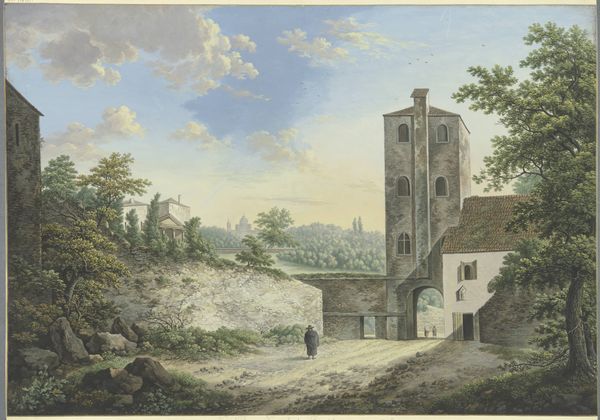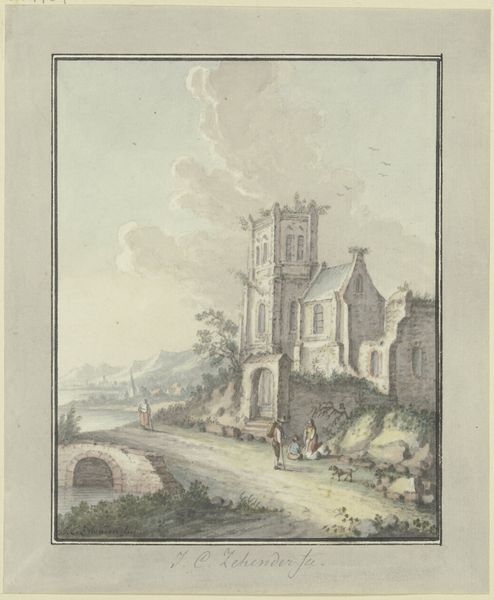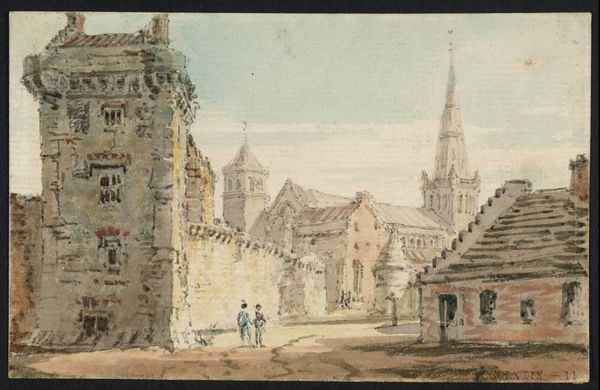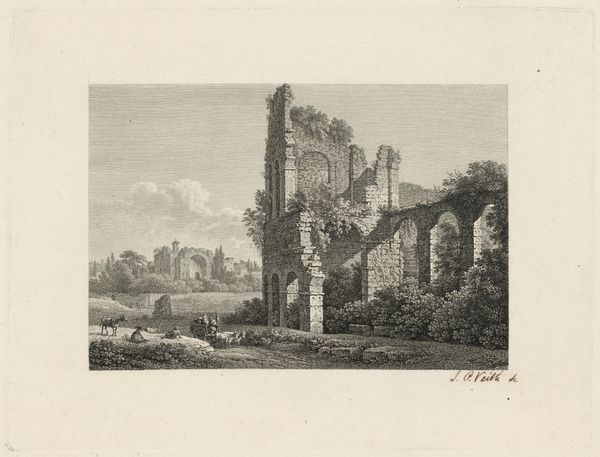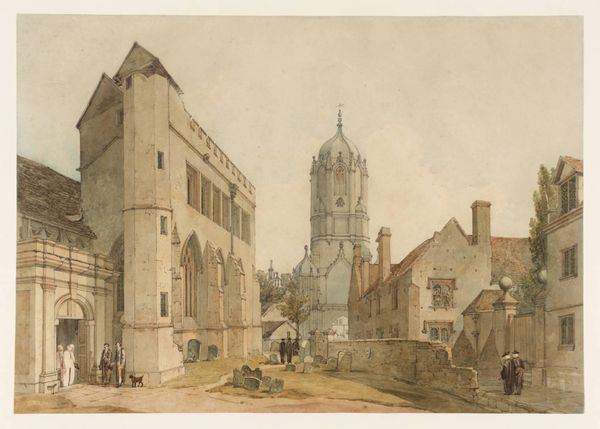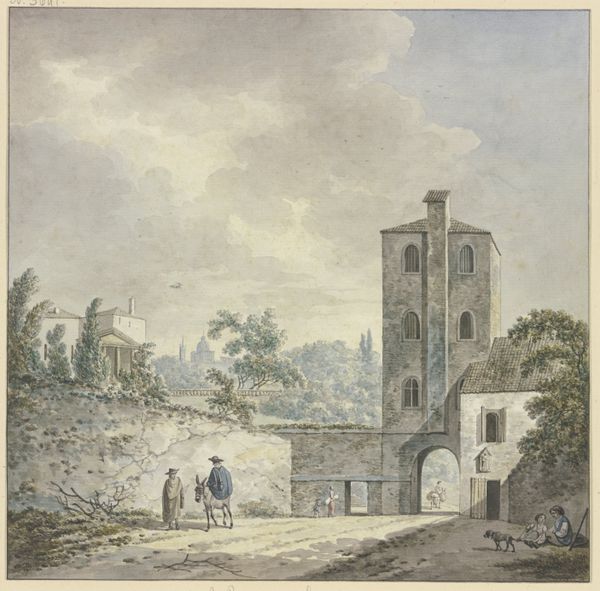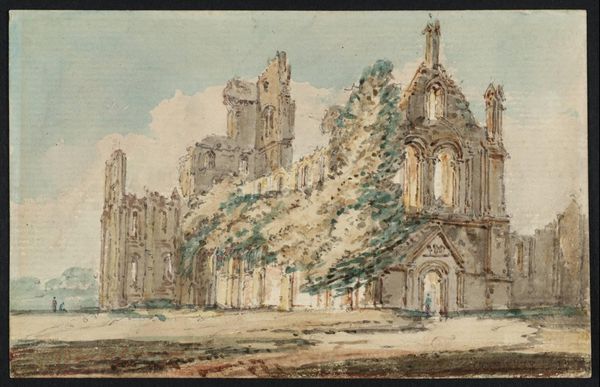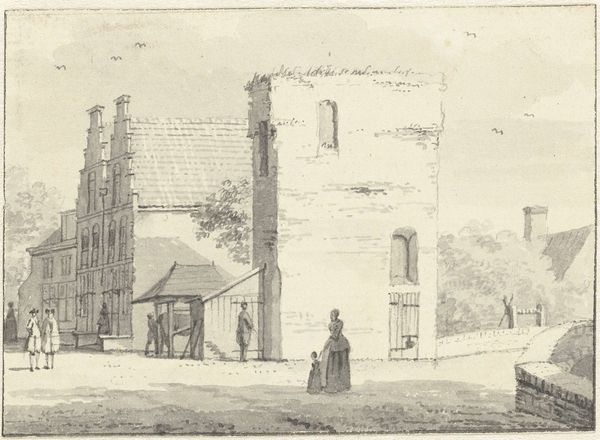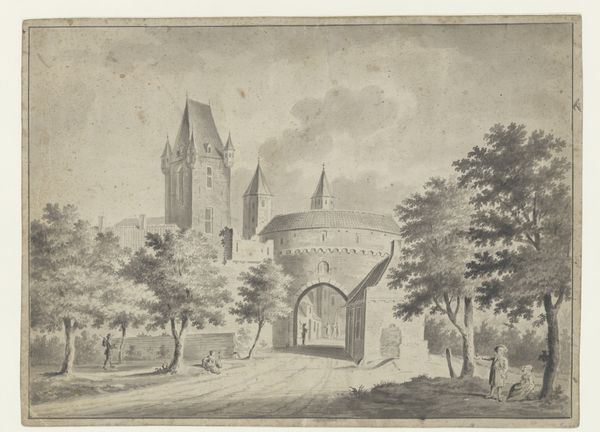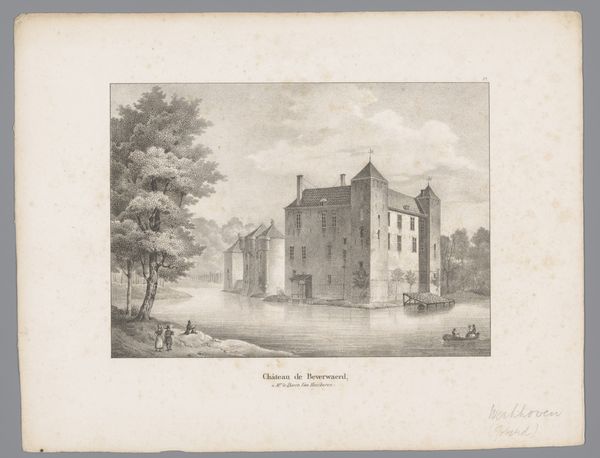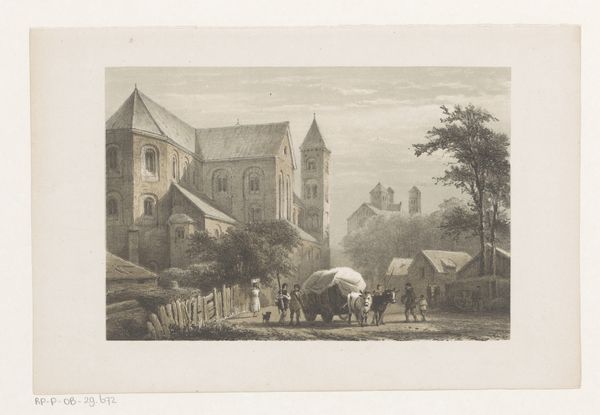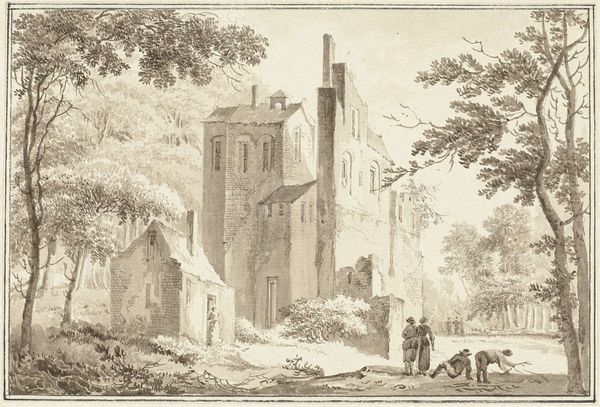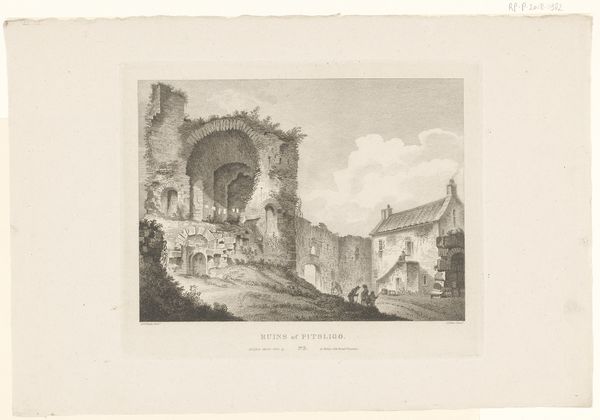
drawing, plein-air, ink, indian-ink, architecture
#
architectural sketch
#
house drawing
#
landscape illustration sketch
#
architectural and planning render
#
drawing
#
neoclacissism
#
aged paper
#
16_19th-century
#
plein-air
#
landscape
#
architecture mock-up
#
ink
#
german
#
indian-ink
#
romanticism
#
architectural section drawing
#
architectural drawing
#
architecture drawing
#
architectural proposal
#
architecture
Copyright: Public Domain
Here in the Städel Museum, we see Georg Melchior Kraus’s watercolor rendering of the Klosterruine in Paulinzella. Dominating the scene is the skeletal ruin of a once-grand abbey, its arches and tower standing as solemn witnesses to time’s relentless march. These ruins evoke the transience of human endeavors. Consider the arches, a motif stretching back to Roman triumphal architecture, symbols of power and permanence. Yet here, they are broken, framing not triumph but decay, a vanitas reminding us of mortality. This melancholic theme resonates across epochs—from ancient Roman memento mori to Northern Renaissance allegories. Such ruins tap into our collective memory, stirring subconscious awareness of time's passage and the cyclical nature of civilizations. These stones whisper tales of vanished worlds, engaging our emotions and inviting contemplation on the impermanence of all things. And so, the ruin persists as a potent symbol, forever resurrecting, in art and mind, the inevitable dance of creation and destruction.
Comments
No comments
Be the first to comment and join the conversation on the ultimate creative platform.
